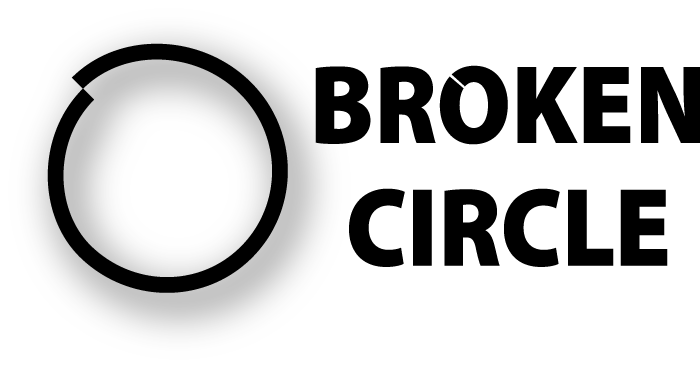Border Architecture during the Corona Crisis
By Eef Veldkamp, 09-06-2020
Border stress
Borders are often the first elements to stiffen in times of crisis. Not always because it would have an actual impact on the crisis itself, but mainly because it is the metaphors through which we think our real conditions. During a global pandemic, it is precisely the classic ‘political body’ – known from Hobbes’ ‘war of all against all’ – that is at stake. The thinking head, the government, turns to the body whereby the skin becomes the metaphor of the border. Both the border and the skin are political signs for 'defenses', and are therefore designed as such: with masks, gloves and other protective measures. The paradox, on the other hand, is that these metaphors at the social level – unlike our skin – have to be realised physically. Otherwise, the boundaries of the body of the state continue to exist as fictions on paper, as are virtually all boundaries. Hence, when the boundary is embodied, it becomes fiction realised. The political body dresses in a metaphorical armour. Having said that, it makes sense to assume that borders are always virtual in the end: they are never ‘hard,’ never ‘impenetrabel,’ which is one if not the reason to maintain them by excessive means, as opposed to borders, for example. A mountain when you try to climb it in harness also functions as a natural slowdown. It is ultimately the boundary that forms the equinox of any viral outbreak: because by definition the virus is what breaks the boundary. It is the ‘outside’ that ‘get in’, drawing from xenophobic fantasies that most defences both produce and protect against. From there we wash our hands (and maintain the boundary of our body), from there we keep our distance (and use social ditches), ceremonial activities that within the fiction realised are of genuinely necessary as protective means.
‘There is no time to think about appearances,’ seems to be the current political dogma when borders are to be barricaded now. Beards appear – within political code of conduct a proper no-go – and politicians are fleetingly seeking solutions, in a time that the party cartel calls for ‘post-party politics.’ In addition to the summer brown, political colours also fade. The argument goes that Corona spreads through people, people move across borders, then it follows that the COVID-19 virus will allow itself to spread across the world like wildfire if we don't close borders. For democracy, it is indeed contradictory enough for the population – its oh-so-dear 'populus' – who the viruses are when it comes to spreading the virus. Hence, with great haste, boundaries are set with everything that is at arm's length; with everything that is frequently present in our societies. In these social Freudian slips, the pseudo ‘non-designs’ of borders themselves show: it is also that which is on the tip of your tong, which slips out in distress. The best aesthetic background today is therefore the apparent lack of aesthetics, not thinking about aesthetics is the new aesthetics. Recently, the aesthetics of transparency have been rampant for decades, especially those that are just right in the field of transparency like banks in their crystal palaces, the aesthetics we come across today as opposed to the aesthetics of transparency are only visible as a lack of aesthetics: it is a bare aesthetic. The aesthetic argument that neoliberals make almost all the time, but which has now likely to become ‘legitimate’ is that ‘there is no time to think of something superfluous like aesthetics!’. As Dutch Minister of Economic Affairs and Climate Policy Eric Wiebes (VVD) confirms with his new mantra: 'Many people, including us, now have other things to do'[1]. This ‘other things to do’-argument has been triumphant during Corona times, and it shows more clearly than the rhetoric of any rhetoric election campaign can do what a government really considers important.
One of the most recent manifestations of this phenomenon occurred when Belgian authorities had to unexpectedly close the border with The Netherlands on March 20, 2020. The Belgians were confronted with a question that had long since disappeared from the internal logistics of the European Union: the demand for internal border architecture. The Belgians suddenly had to look for objects that could function as an emergency boundary in collage. The need was so urgent that there was no time to think about the aesthetics which is exactly why they look so incredibly designed. The aesthetic coding known to the municipal workers who had been given the placement order functioned as muscle memory. There was no time or attention, as is normally the case, to attempt to cover up the beliefs that underlie the designs with an appealing and hip yet dissimilatory design, as is done in the aesthetics of transparency. Hence, these border designs were somewhat ‘fair’ about the code from which they originate, and where above all tolerated as such. Politics glistens through it. Aesthetic slip of the tongues. At the same time, since we have become less familiar with the internal border, we also need to regain our capacity not only to analyse them aesthetically, but above all to give them political significance. It is my ambition to do this with this short essay. Hence, let's take a look at the architecture of the recent Belgian emergency borders.
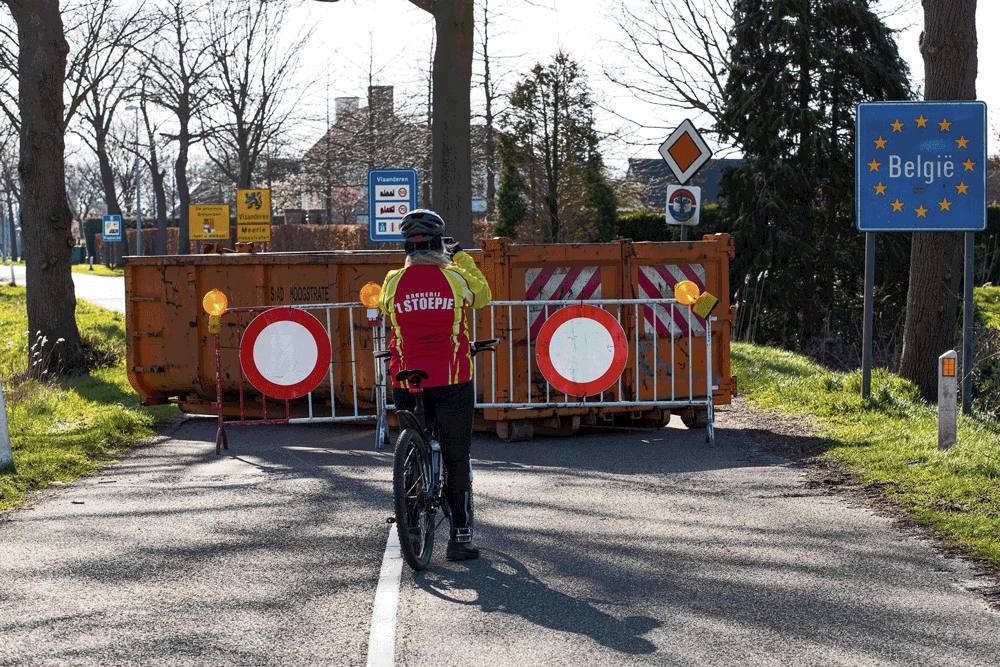
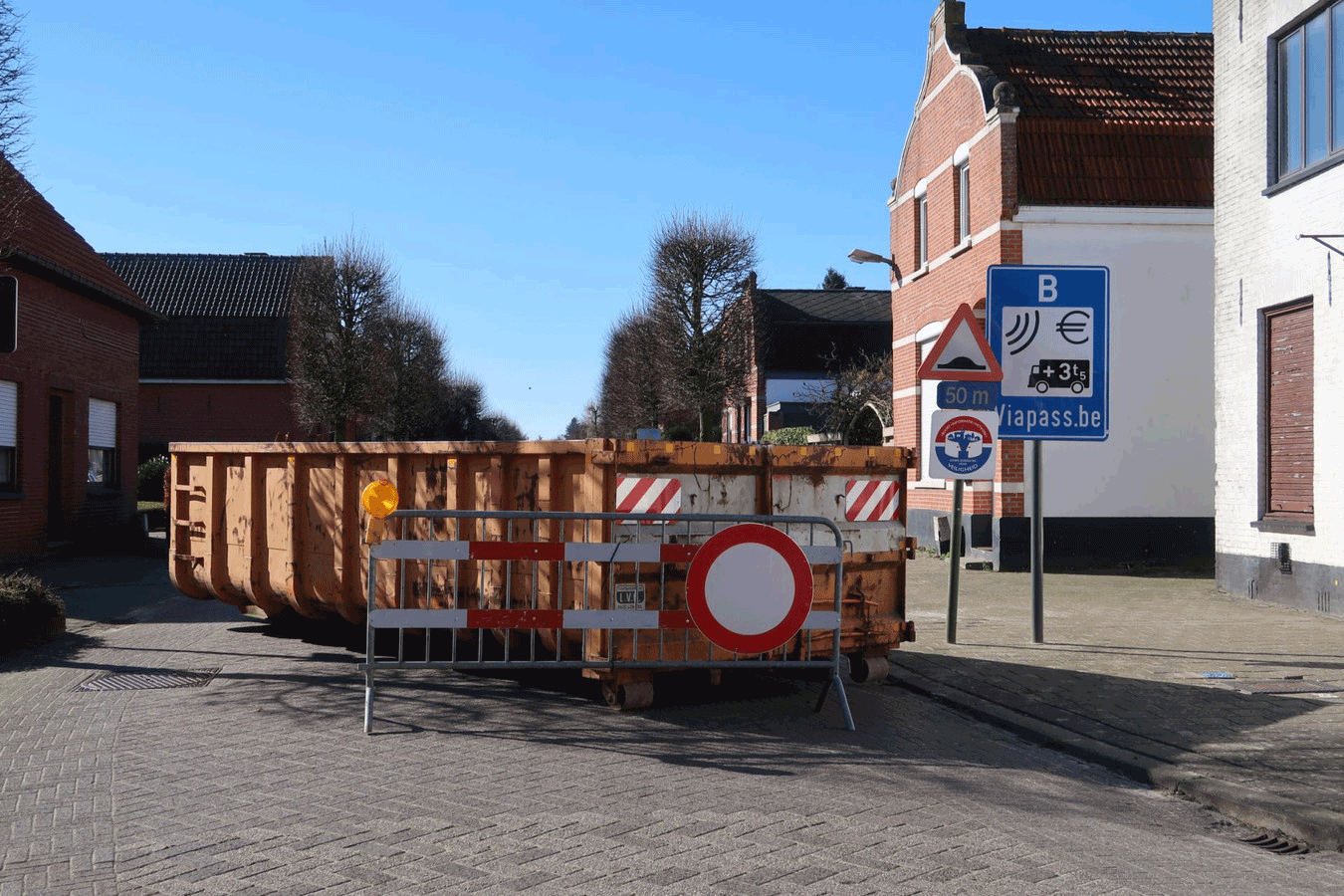
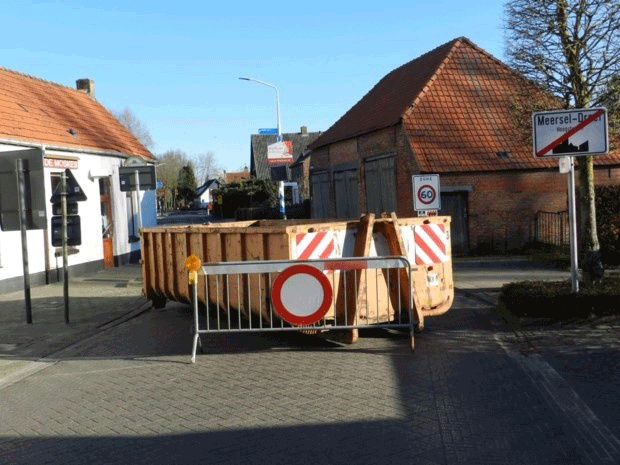
Cobblestones and carriages
Belgian authorities must have thought that their spontaneous constructions – as applies to every border – should inhibit passage, no, even obstruct passage completely. A range of options are available to create such a construction. Looking back at well-known historical examples where a similar urgency prevailed, such as during the Commune de Paris in 1871, it appears that everything can function as a border. The options are technically unlimited, which is exactly why the specific elements chosen by Belgian authorities are interesting. Before we go into that, it is relevant to mention that in almost every hasty boundary construction one of two basic choices are made, both of which are based on what they limit. Borders are always tailor-made for what they define, in this (and in most) case a road. The first basic choice is to work with the same materials as that what is bounded is made of itself. The second choice is that the boundary is made of what normally moves over what is now blocked. The horizontal movement in the case of the first option when the boundary is made of the infrastructure it blocks movement is completely inhibited simply by reconfiguring the elements that would otherwise define the conditions for the movement across the boundary: for example, pavers. The road is paved again but not horizontally but vertically into a monolith and thus becomes a wall, the archetype of the border. Nothing more than a 90-degree turn, make the road the antithesis of a road. The horizontal movement comes to a frontal stop, intercepted by the mechanisms of delay, the horizon disappears, and a point is created, a definitive dot. An end. The horizon has been reached, after that there is nothing more, or well there exists more after, ‘but not for you at this moment in time’. For example, many barricades in history used the cobblestones that paved many of the streets back then, including the streets of Paris at the time of the Paris Commune, where people stacked the cobblestones into barricades. Anchored by both removing part of the infrastructure and doubling the removed part on its own. The second common improvised boundary strategy used is to use what is usually transported across that infrastructure to block that same infrastructure, as was done during the Commune de Paris by lifting carriages off their wheels and sideways placed roads. This strategy therefore tries to bring the movement across that horizontal structure to a complete conclusion: it is an attempt to 'hide' the infrastructure by itself, and to double it on itself.
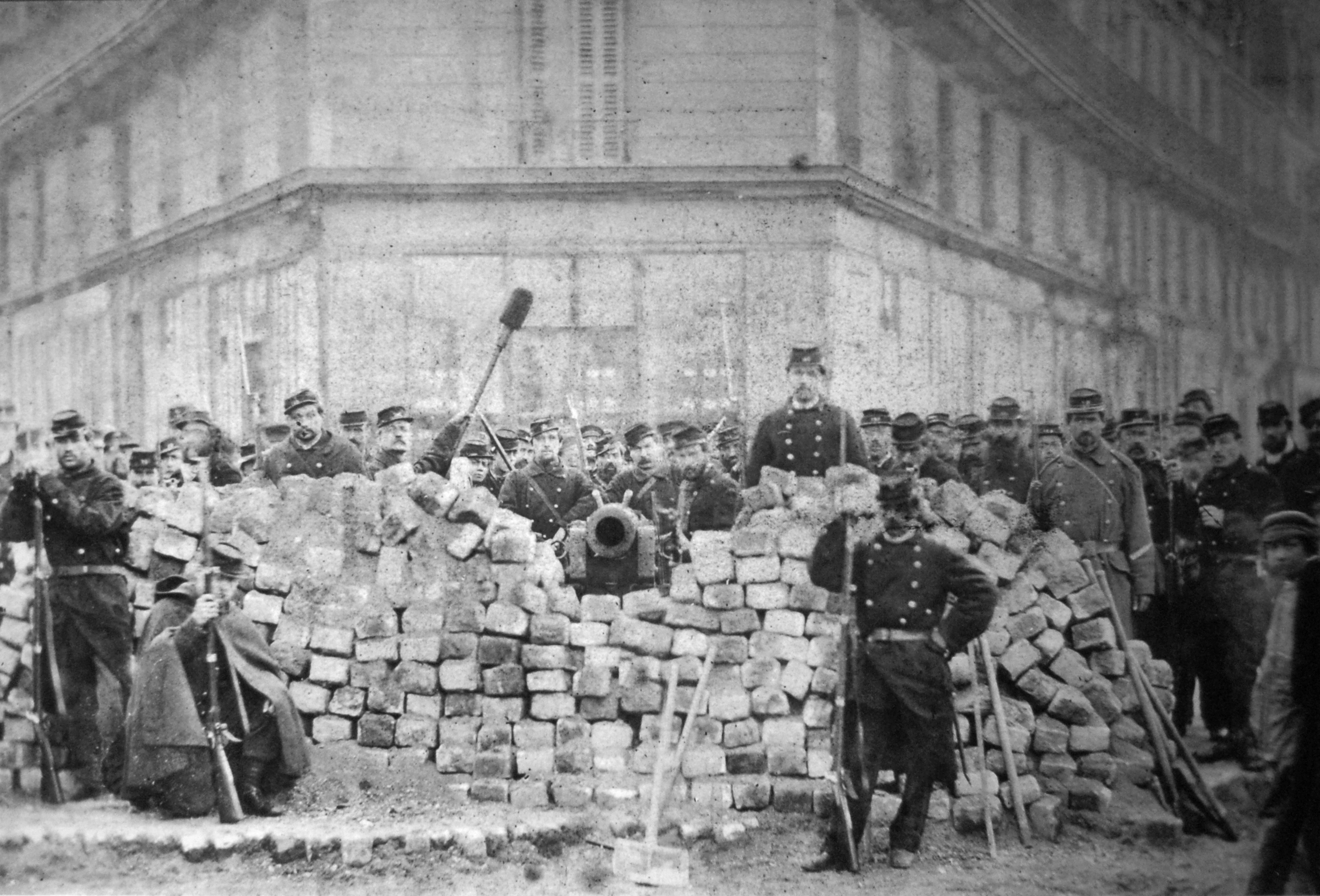
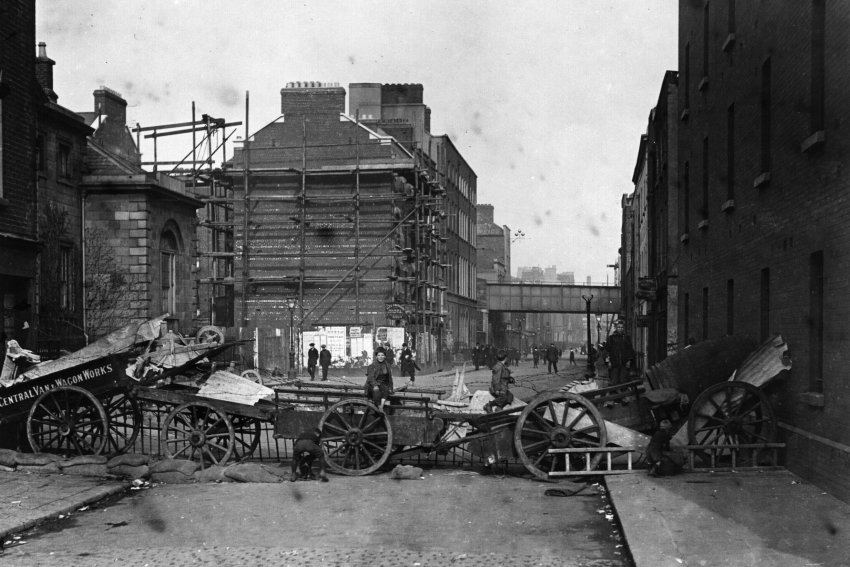
Container, crush barrier, C01 sign
Belgium has recently constructed similar improvised borders using three basic elements, of which we all know their semiotics, and this is the code of economic infrastructure. The first element is a bulk container, which is used because of its heavy connotation and its large size. It mobilizes what otherwise stays in place, lifeless and what only becomes profitable in bulk. Now that the mover of the immovable self is immobile, no movement is possible at all. The shoulders that bear the weight of economic goods are now on their own backs. In the middle of the road, usually sloping because that's the only way a truck can place it, it's like the transport has stopped. As the displacement of economic goods hinders human movement, it also reveals that it is indeed the economic goods that are valued above human movement. I remember once hearing that we live in a time when goods have more rights when crossing borders than people, and I must agree because goods have become the border; the goods are the new customs, which determine transit. The container is the everyday equivalent of the tilted carriage. Although we use aesthetic elements that have 'border-like' appearance to indicate a border (nowadays most borders are mainly invisible surveillance technologies), it is the goods that are transported across a border that determine the movement of people, and thus manifest as a border . Goods are the new frontiers.
The second element in the aesthetic configuration of the Belgian improvised border is one crush barrier, which is used to separate and create distance. In other words, these crush barriers are used to indicate place and to guard who should go where in that place, and especially in which direction. Aligned vertically on the road, they confirm movement and recognize a speed to move along something, but when the crush rack is placed perpendicular to the road it becomes a crash barrier, meaning a complete stop. As a "dot" as opposed to a "comma", where the second implies a speed and the first a stop. The crush barrier, on the other hand, does have a temporary character, because it is in fact a movable fence. So it builds its strength on apparent impermeability - and thus appeals to your morality - never to be truly impenetrable. The idea of a proper ban on movement, the idea that the border can be completely closed, is a misconception that Trump nevertheless often advocates in his border policy. A border is a moral appeal, and it responds to guilt. It is the effect of something that has "illegal" status, the strongest limit of all. Hence, the crush barrier is more than enough. Despite everyone knows that it takes a push to move it, and since there is only one that it is easy to walk along, both of them make little difference to the functionality of the border. An important element that prohibits the easy offense is that the illegality of that act must be publicly and explicitly announced: it involves a ceremonial element linking an activity to a punishment.
The third and final element, next to the road on which all these elements are located, is a simple and familiar CO1 sign indicating that the road is 'inaccessible' in both directions, confirming that it is indeed a barrier that blocks what would otherwise be function a way. This sign is the rolling ban ceremony. It is the sign that the random elements summarized above pack semantically to a boundary. This round aluminium plate uses what all road users know. A blank white area circled by a RAL 3020 traffic red bar: it does not explain, and although you could have seen that the road was inaccessible, it has only become legal after the sign has been installed. It is now forbidden to cross. Sometimes these signs are supported with visual aids, as any legal requirement that knowledge of them is essential and must be made explicit so that people can adhere to it: it must be made explicit publicly, given that the border concerns everyone. Otherwise, no one could be held liable. Hence, these elements are the "announcement" of the change in the situation, the aesthetic of the state of exception that manifests on the road ahead. Vision aid can be obstacle lighting, a flashing battery-powered yellow light that warns you, or rather a class three retro-reflective film affixed to the board itself, reflecting light that you emit from your headlights, for example, which is why when you get close, legal commandment bends as if looking into your own headlights, so imposing yourself the commandment. You say to yourself that the road is closed.
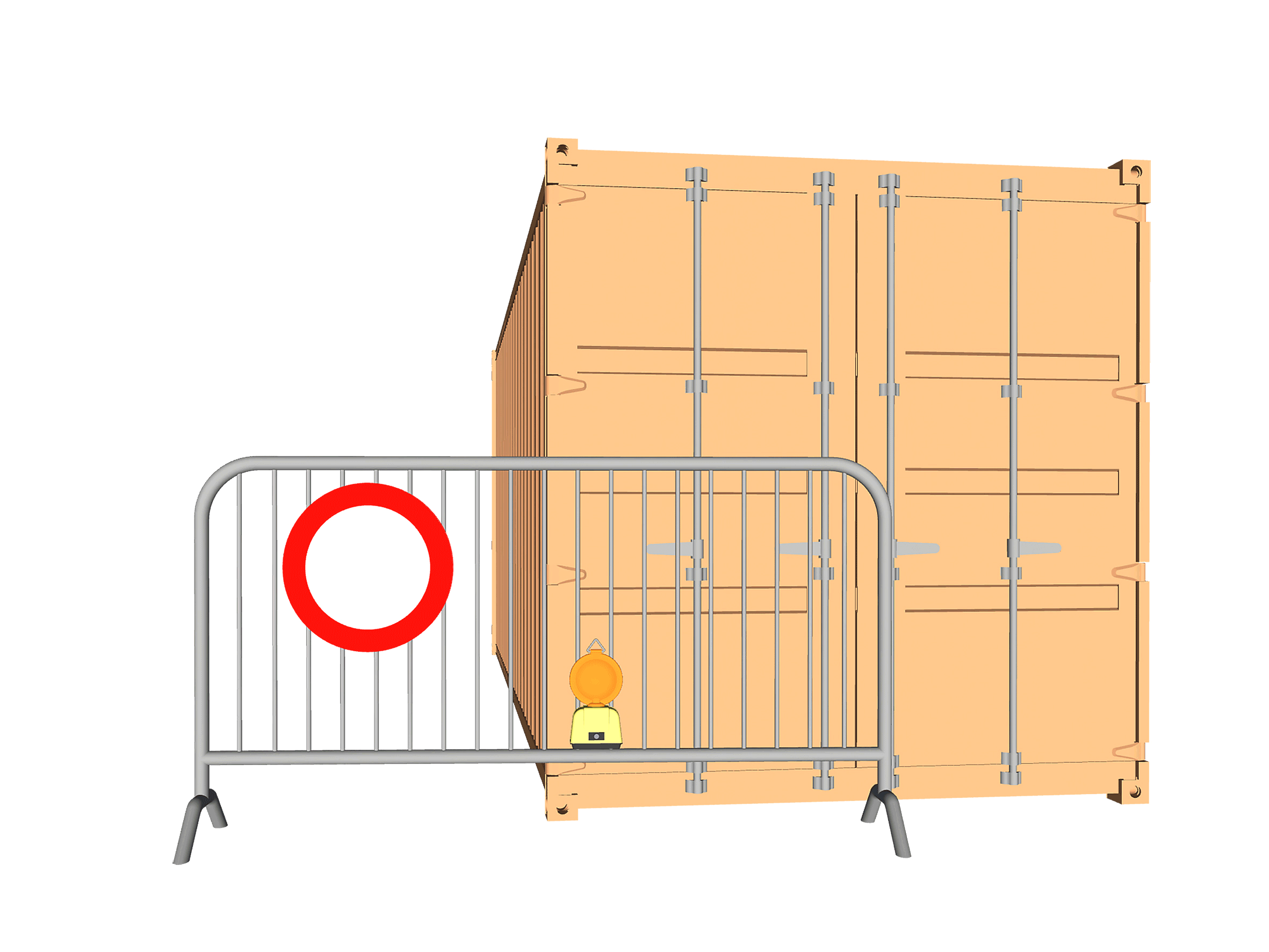
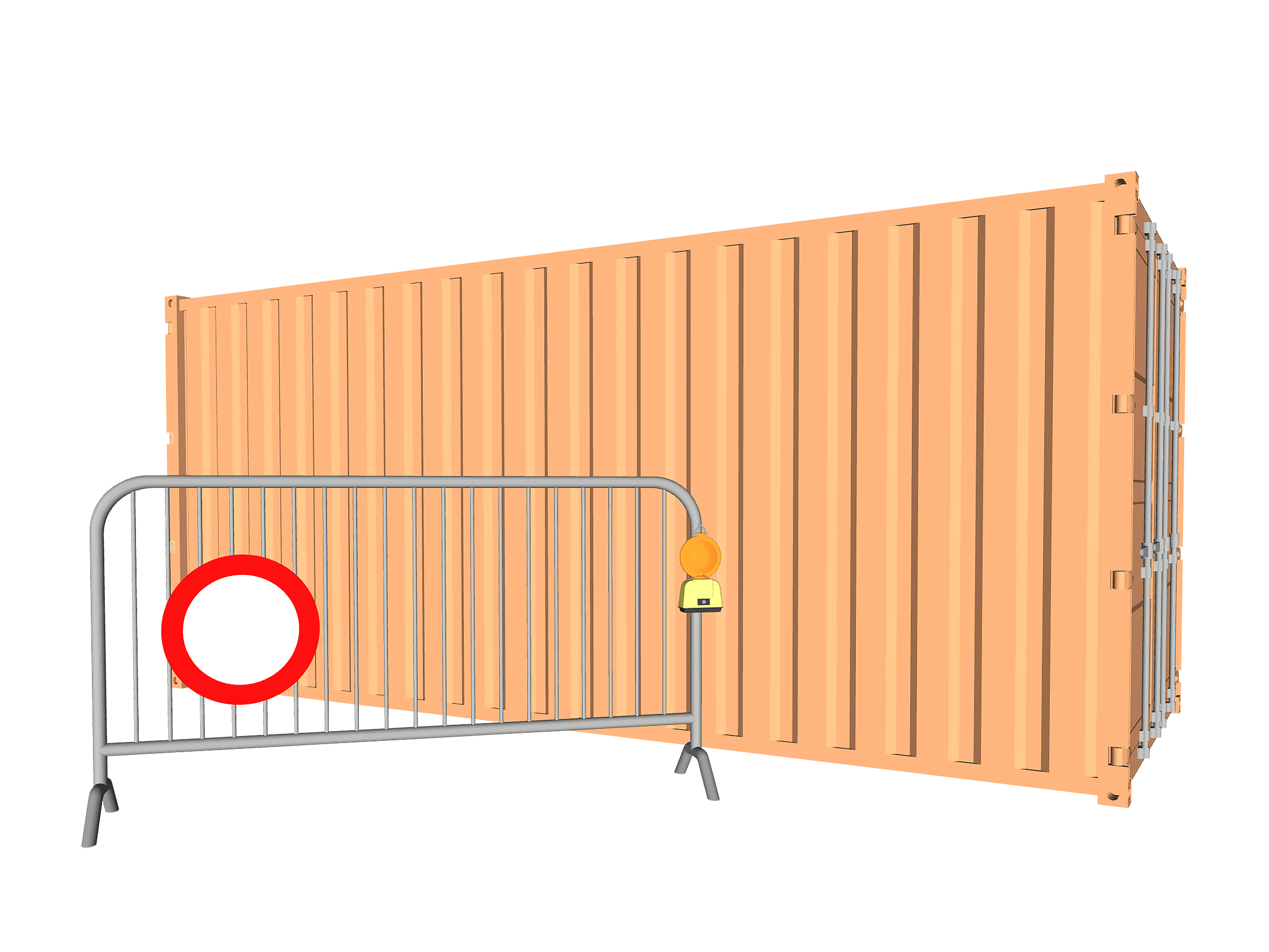
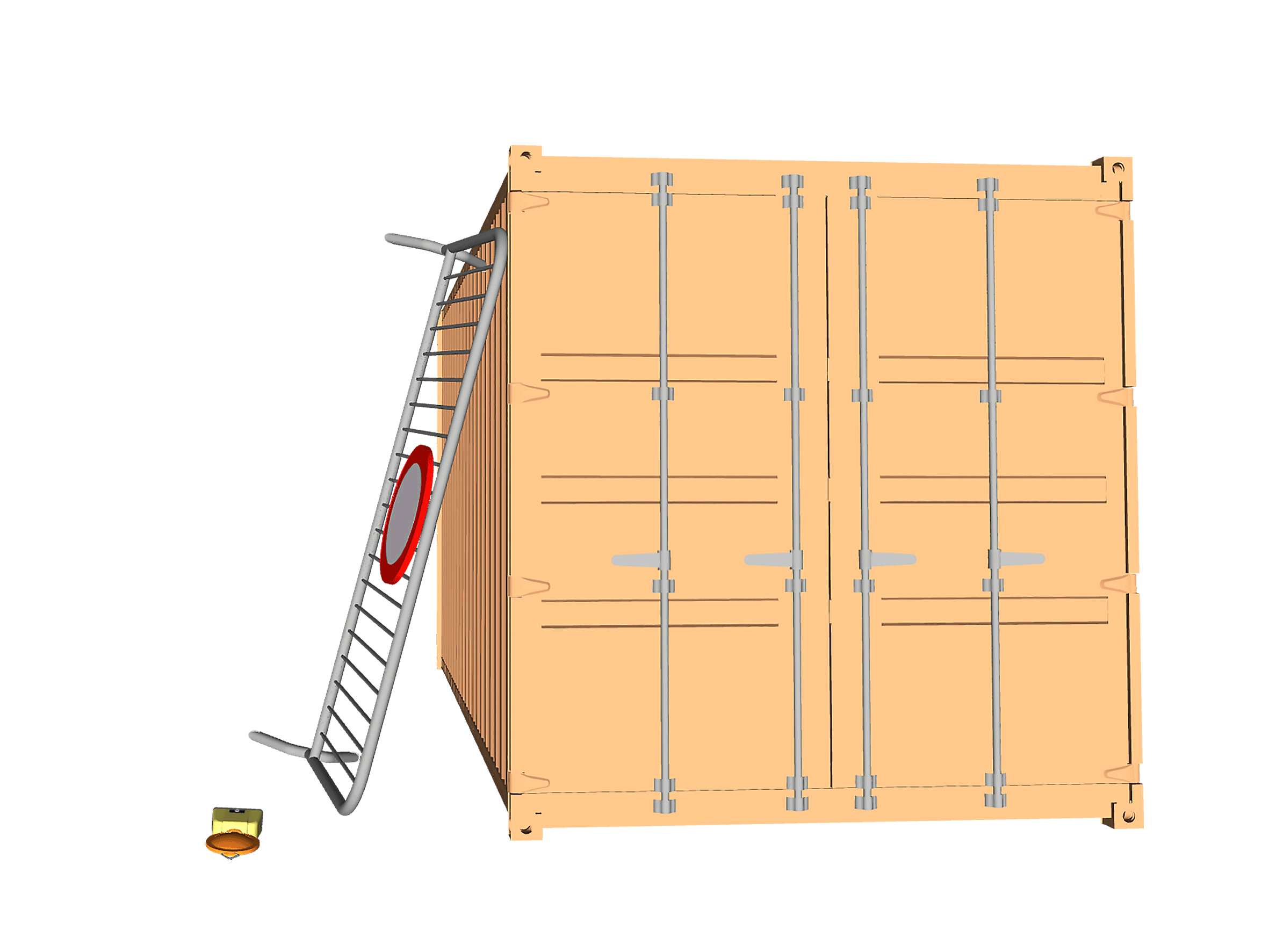

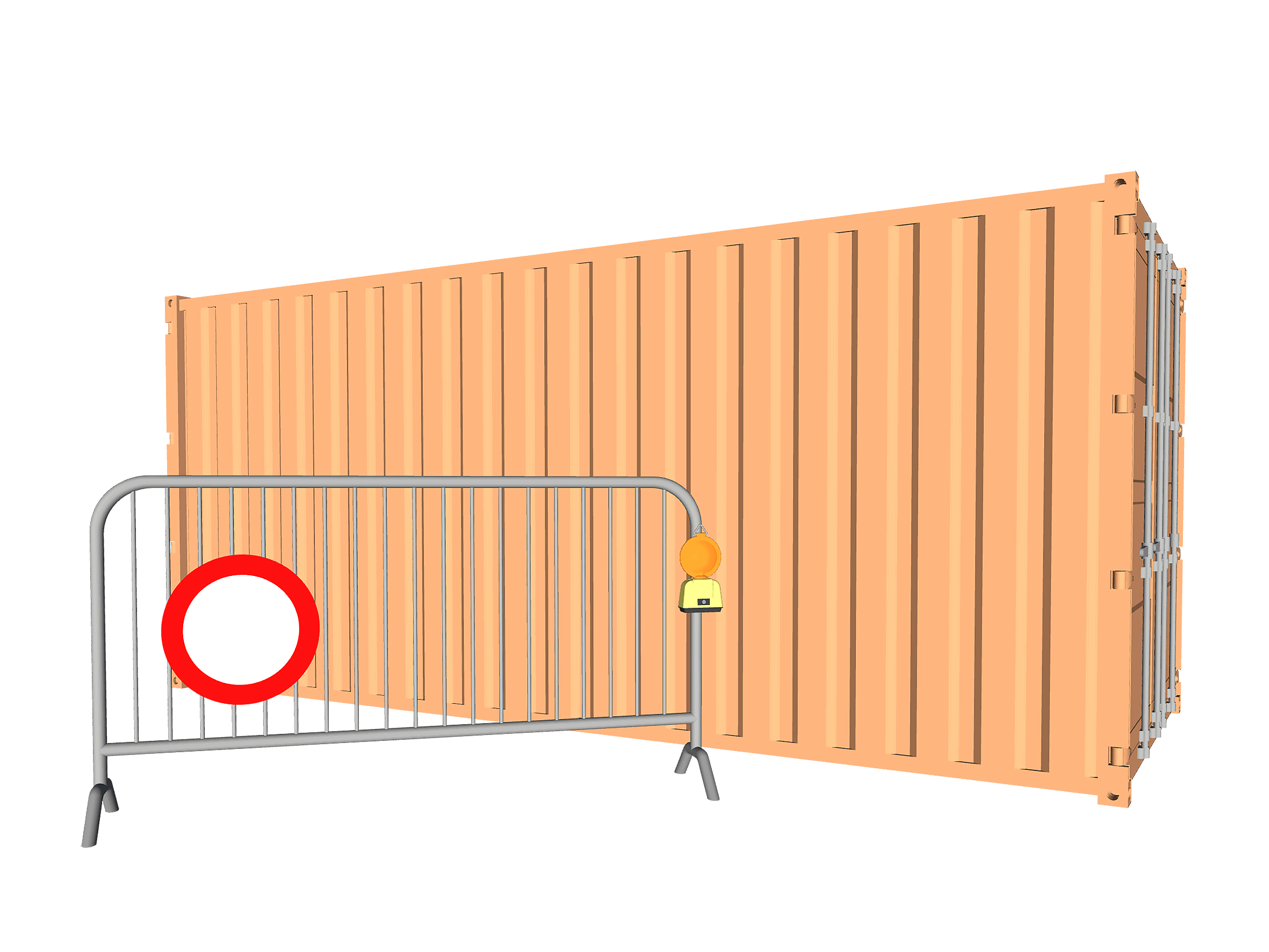
Biography:
Eef Veldkamp (1993) is an artist and researcher at the ArtEZ University of the Arts where he also teaches. Through artistic and philosophical research methods, he develops subversive textual interventions that challenge the reader to think about new realities. In his artistic practices, he uses the findings of his research on a wide range of political subjects to develop so-called 'counter-systems', these are aesthetic infrastructures that try to intervene in the fabric of our reality through so-called 'battery art' to introduce - art that does.
Figures:
1. Eef Veldkamp, Barricade Collage #2, 2020, photo of 3D model. Copyright 2020. www.eefveldkamp.nl
2. Peter de Jong/AP, “Grens deels dicht” in NRC.nl, 24-03-2020. Photograph.
3. MaRicMedia / Jeroen Stuve, “Containers op de grensovergang: Nederlanders komen België niet meer in via sluiproutes” in BNdestem.nl, 21-03-2020. Photograph. https://www.bndestem.nl/roosendaal/containers-op-de-grensovergang-nederlanders-komen-belgie-niet-meer-in-via-sluiproutes~a37bb96f/
4. “‘Cordon’ wordt werkelijkheid: Vlaamse sluipwegen afgesloten met containers, dranghekken en barricades” in Nieuwsblad.be, 22-03-2020. Photo: MPH. https://www.nieuwsblad.be/cnt/dmf20200322_04898108
5. Bruno Brakhais, Barricade Voltaire Lenoir Commune Paris 1871, 1871, photograph. CC Public Domain.
6. Unknown Author, Öster Aufstand - Dublin – Barrikade, 1916, Photograph, Public domain.
7. Eef Veldkamp, Barricade Collage #2, 2020, photo of 3D model. Copyright 2020. www.eefveldkamp.nl
8. Eef Veldkamp, Barricade Collage #3, 2020, photo of 3D model. Copyright 2020. www.eefveldkamp.nl
9. Eef Veldkamp, Barricade Collage #4, 2020, photo of 3D model. Copyright 2020. www.eefveldkamp.nl
10. Eef Veldkamp, Barricade Collage #5, 2020, photo of 3D model. Copyright 2020. www.eefveldkamp.nl
11. Eef Veldkamp, Barricade Collage #5, 2020, photo of 3D model. Copyright 2020. www.eefveldkamp.nl
[1] “Kabinet stelt nieuwe klimaatplannen uit” NOS, 17-04-2020. URL: https://nos.nl/artikel/2328548-kabinet-stelt-nieuwe-klimaatplannen-uit.html
